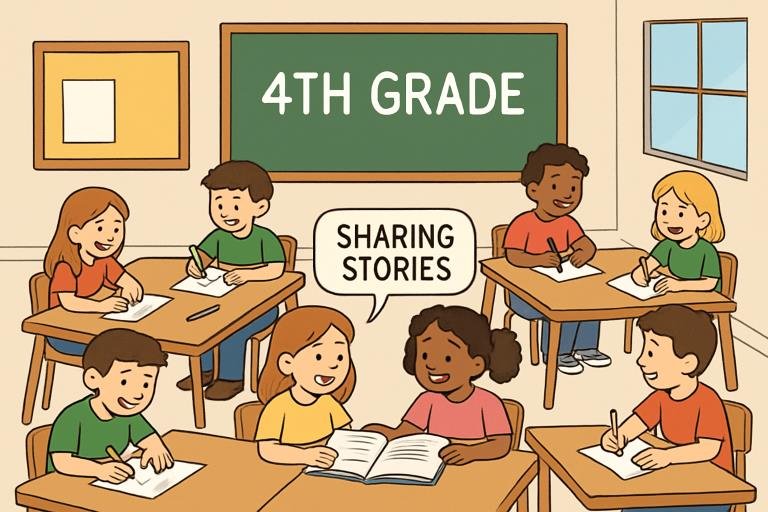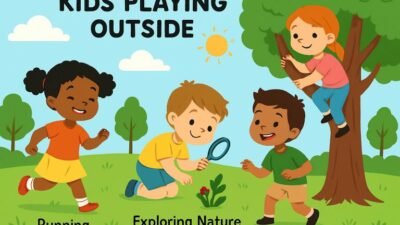Key Takeaways
- Engaging in creative writing projects boosts language skills and confidence in fourth graders.
- Variety in writing activities encourages both reluctant and enthusiastic writers.
- Connecting writing projects to the real world fosters motivation and deeper learning.
- Collaboration, feedback, and playful prompts nurture stronger writing communities in classrooms.
- Evidence-based strategies help teachers make writing more enjoyable and effective.
Why Creative Writing Matters in Fourth Grade
Fourth grade is a pivotal year where students transition from learning to read to reading to learn, and creative writing is a key driver of this transformation. Participating in creative projects helps children unlock their imagination, sharpen their writing mechanics, and build the self-confidence needed to communicate their thoughts. Teachers seeking ideas can find a wealth of ready-to-use prompts and activities with 4th grade writing worksheets, which are designed to encourage both reluctant and enthusiastic writers to take storytelling risks and express themselves more boldly. Engaging in thoughtful writing assignments also supports essential literacy skills, including reading comprehension, vocabulary expansion, and logical organization. Frequent creative writing practice contributes to stronger critical thinking abilities and an adaptive learning mindset—qualities that benefit students across all subjects.
Types of Creative Writing Projects for Young Learners
Variety is key to maintaining enthusiasm for creative writing throughout the school year. Fourth graders are ready to experiment with different structures and genres, making this the perfect time to introduce a range of projects:
- Illustrated Storybooks:Students write and illustrate their own stories, merging art with narrative skills.
- Class Magazines:Collaborative magazines allow each child to contribute articles, poems, or comics on a chosen theme.
- Comic Strips:Perfect for visual learners, these combine dialogue, characterization, and sequential storytelling.
- Personal Narratives:Children reflect on real-life events or dreams, building self-awareness and empathy.
- Short Plays and Skits:Writing for performance taps into drama, collaboration, and writing for an audience.
- Poetry Slams and Story Cubes:Interactive activities that turn writing into a lively group event.
- Digital Storytelling:Even the most reserved students can shine by combining images, text, and audio using simple online tools.
Combining genres—for example, setting a magical adventure in a familiar hometown—encourages flexibility and deeper engagement. Projects can be tailored to meet different interests, allowing every child to find their niche.
Incorporating Real-World Connections
Students are most inspired when their writing matters outside the classroom. Assignments that mirror real-life writing help them see purpose in their work. Examples include writing letters to community leaders, creating brochures about local attractions, or authoring scripts for school-wide announcements. Some teachers even submit student work to literary contests or feature it in classroom anthologies, providing an authentic audience and real-world recognition. Research underscores the power of project-based learning—especially when tied to issues that affect students personally or locally. Meaningful projects deepen understanding and motivation by connecting writing tasks to authentic contexts.
Making Projects Inclusive for All Levels
An inclusive classroom honors every student’s strengths and challenges. Differentiated instruction makes creative writing accessible for all, regardless of proficiency. Flexible prompts, visual aids, and graphic organizers provide scaffolding where needed. Some students might benefit from oral storytelling or acting out their story before writing, while others use sentence starters or word banks. Choice is another powerful motivator. Allowing children to select their format or subject matter gives them ownership over the process. Group activities further boost inclusivity, letting students learn from each other’s diverse skills and building a culture of peer support.
Top Tools and Resources for Teachers
Modern technology and professional networks offer a treasure trove of resources for invigorating writing instruction. Digital platforms like Google Docs allow for easy collaboration and real-time feedback, while Padlet and Seesaw help students share polished work. Story dice apps spark on-the-spot creativity, and text-to-speech tools support those with reading challenges. For new ideas and lesson plans, teachers can explore the National Writing Project for research-based strategies and a thriving community. There are countless printable resources, workshops, and discussions available to support classroom innovation and keep writing instruction fresh.
Fostering Collaboration and Peer Feedback
Learning to write well is easier together. Peer circles, small-group workshops, and collaborative publishing projects foster a strong classroom writing community. In these environments, students help edit, offer constructive criticism, and see diverse writing styles in action. Clear guidelines and structured feedback tools ensure feedback stays positive and productive. Collaborative writing not only raises quality—it teaches communication, empathy, and teamwork, all essential life skills. The bonds forged through group creativity help students take greater creative risks and celebrate each other’s achievements.
Avoiding Common Pitfalls in Classroom Writing Projects
Even the most creative classroom can face challenges if projects are overwhelming or instructions are unclear. Successful writing projects break large goals into smaller, manageable tasks and encourage ongoing dialogue rather than focusing only on the final product. Checklists help organize progress, and sample texts clarify expectations. Celebrating effort and embracing mistakes as part of learning reduces anxiety and fosters resilience. Connecting projects to things students are passionate about—whether sports, hobbies, or community events—also keeps motivation high and promotes a growth mindset for all writers.
Conclusion
Staying energized and innovative in teaching writing relies on seeking inspiration from educators, researchers, and real student stories. National Public Radio provides an outstanding series on how creative writing transforms classrooms. Drawing from a variety of methods and new media ensures writing projects remain relevant, engaging, and joyful for children. Prioritizing writing projects in the fourth-grade curriculum does more than improve literacy—it helps children discover the power of self-expression and the joy of storytelling. By engaging in various projects, students strengthen essential academic skills while gaining confidence, empathy, and problem-solving abilities beyond the classroom. When teachers connect assignments to real-world contexts and encourage collaboration, students see writing as meaningful, purposeful, and fun. Every child can find their voice and feel proud of their growth with the right mix of structure, creativity, and inclusivity. Ultimately, investing in imaginative writing opportunities lays the groundwork for lifelong learning, curiosity, and communication skills that will serve students well in every stage of life.



